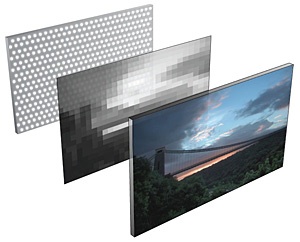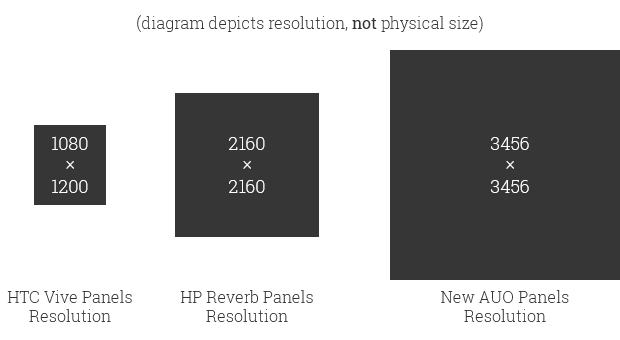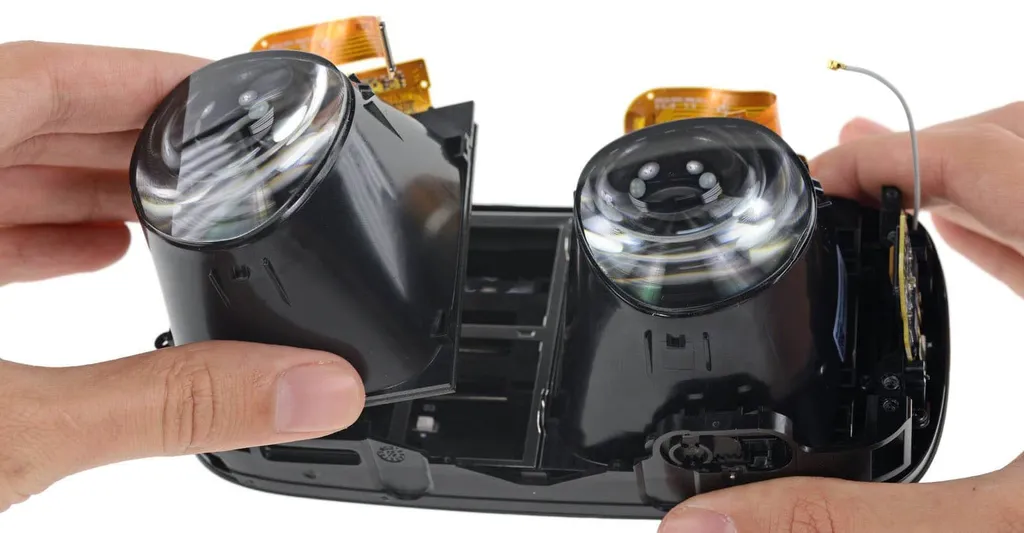Taiwanese display panel manufacturer AU Optronics is showing a new 3456×3456 LCD panel for VR at Display Week this week.
3.5K Per Eye HDR
The panel is an LCD, but supports HDR through the use of 2304 individually controlled LED backlight elements rather than one global backlight. This is called ‘local dimming’, and is used on high end LCD televisions for HDR too. It doesn’t give the same quality of HDR as OLED (which can control brightness per-pixel), but with that many LEDs it can come close.

HDR displays, when given HDR content, can display a wider range of brightness and colors per frame. It should make light and colors in VR look closer to the real world. No VR headset on the market or announced has HDR. Valve experimented with HDR panels back in 2015, and the company’s Jeremy Selan remarked that going back to SDR panels felt “disappointing”.
These are 2.9 inch panels, so two would be used in a headset, one for each eye. This means headsets with these panels could support mechanical IPD adjustment if the manufacturer wanted.
Foveated Rendering Required
With a staggering resolution of 3456×3456, two of these panels in a headset would total almost 24 million pixels. That’s roughly three times the number of pixels of a 4K monitor, and more than double even the HP Reverb.

HP recommends a GTX 1080 as minimum for the Reverb, so no GPU on the market today, except maybe the Titan RTX, would be capable of driving these panels. For more on this, see our editorial on why foveated rendering is essential for the next generation of VR.
In fact, no GPU on the market today can even output that many pixels at 90 Hz. Neither DisplayPort 1.4 nor HDMI 2.0b has enough bandwidth, even with Display Stream Compression. So not only would foveated rendering be needed, but foveated display output too, wherein different parts of the image can be sent across the cable at different resolutions and the display controller on the headset can position each part at the correct position.
Path To Mass Production
It’s important to note that display manufacturers often show displays, even production-ready, that never make it to market. For those that do make it to market, it can take a year or even two years to reach mass production.
Samsung showed off 2K OLED panels for VR all the way back in June 2017, and those haven’t come to market. The displays on the HP Reverb were shown off around one year ago.
But if these panels do come to market, driven by foveated rendering, they would provide a VR visual experience beyond anything ever seen outside of R&D labs.

























